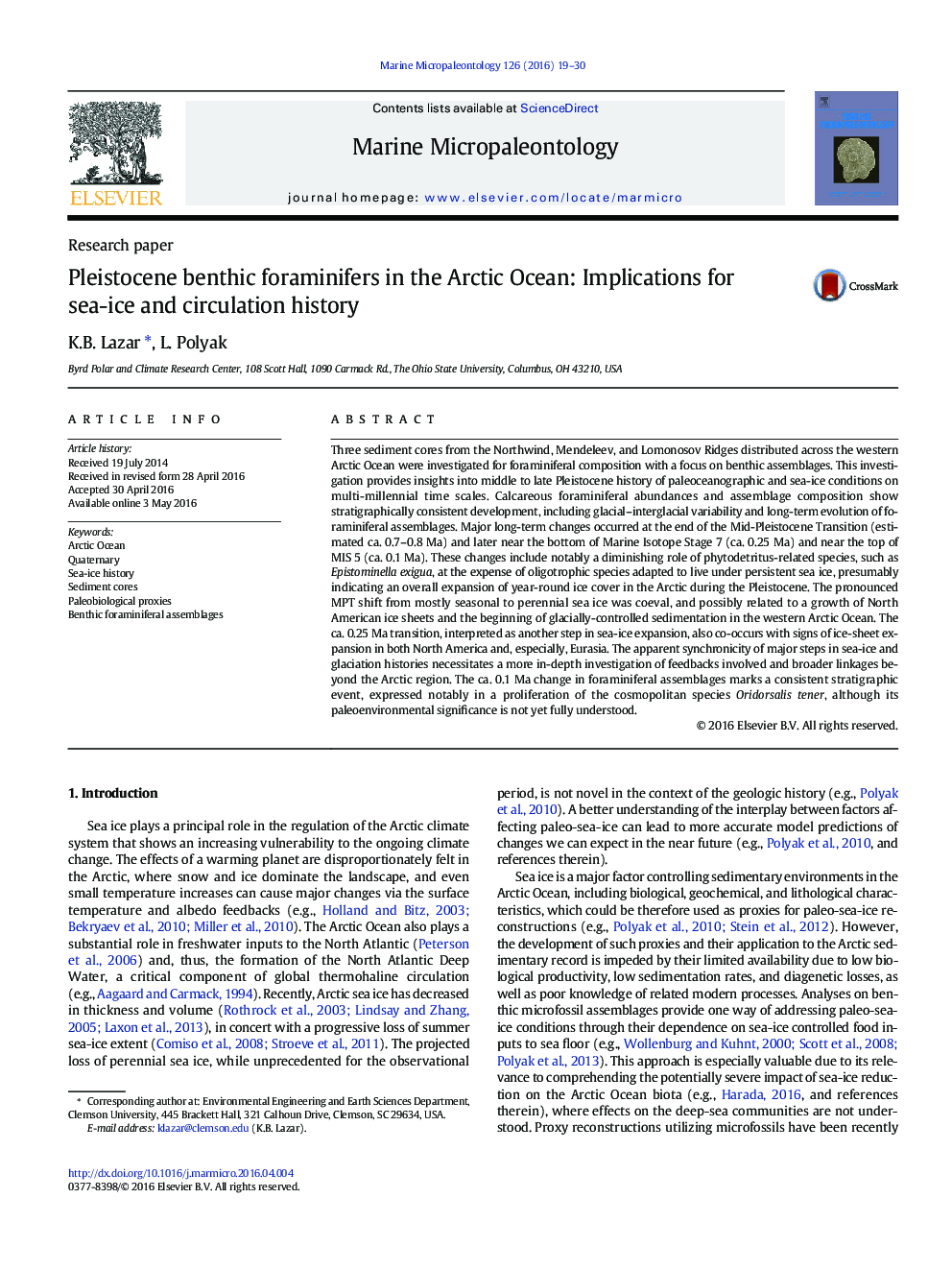| Article ID | Journal | Published Year | Pages | File Type |
|---|---|---|---|---|
| 4748776 | Marine Micropaleontology | 2016 | 12 Pages |
•Calcareous foraminiferal records from the western Arctic Ocean were described.•Sea-ice conditions are reconstructed based on foraminiferal assemblages.•Major step changes occur at ca. 0.7–0.8, 0.25 and 0.1 million years ago.•Perennial Arctic sea ice expanded during Pleistocene.
Three sediment cores from the Northwind, Mendeleev, and Lomonosov Ridges distributed across the western Arctic Ocean were investigated for foraminiferal composition with a focus on benthic assemblages. This investigation provides insights into middle to late Pleistocene history of paleoceanographic and sea-ice conditions on multi-millennial time scales. Calcareous foraminiferal abundances and assemblage composition show stratigraphically consistent development, including glacial–interglacial variability and long-term evolution of foraminiferal assemblages. Major long-term changes occurred at the end of the Mid-Pleistocene Transition (estimated ca. 0.7–0.8 Ma) and later near the bottom of Marine Isotope Stage 7 (ca. 0.25 Ma) and near the top of MIS 5 (ca. 0.1 Ma). These changes include notably a diminishing role of phytodetritus-related species, such as Epistominella exigua, at the expense of oligotrophic species adapted to live under persistent sea ice, presumably indicating an overall expansion of year-round ice cover in the Arctic during the Pleistocene. The pronounced MPT shift from mostly seasonal to perennial sea ice was coeval, and possibly related to a growth of North American ice sheets and the beginning of glacially-controlled sedimentation in the western Arctic Ocean. The ca. 0.25 Ma transition, interpreted as another step in sea-ice expansion, also co-occurs with signs of ice-sheet expansion in both North America and, especially, Eurasia. The apparent synchronicity of major steps in sea-ice and glaciation histories necessitates a more in-depth investigation of feedbacks involved and broader linkages beyond the Arctic region. The ca. 0.1 Ma change in foraminiferal assemblages marks a consistent stratigraphic event, expressed notably in a proliferation of the cosmopolitan species Oridorsalis tener, although its paleoenvironmental significance is not yet fully understood.
